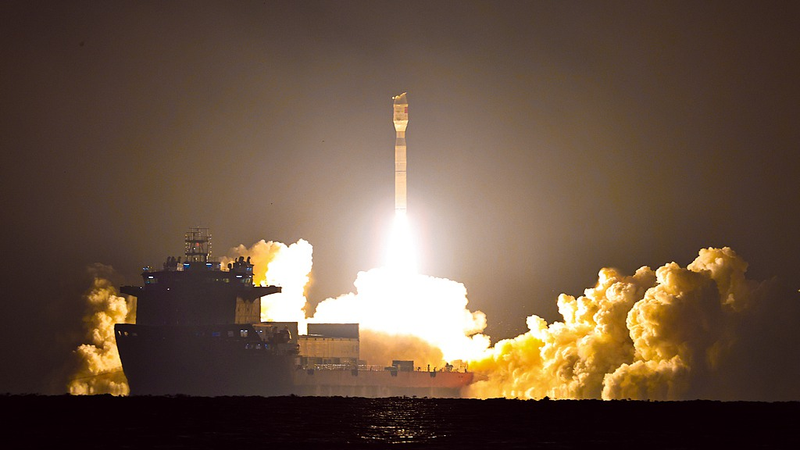The Chinese mainland’s space ambitions took to the waves early Tuesday as a Smart Dragon-3 rocket lifted off from a sea platform near Rizhao City in the eastern Shandong Province.
At 3:48 a.m., the four-stage solid-propellant carrier soared from offshore waters, carrying 11 Geely-05 constellation satellites into a sun-synchronous orbit at 500 kilometers altitude. This mission marks the seventh flight of the Smart Dragon-3 and underscores a growing trend in flexible, sea-based launches.
The Geely constellation, operated by GeeSpace—a subsidiary of Geely Technology Group—targets a 72-satellite network by 2025. Once complete, it will deliver commercial Internet of Things connectivity to users around the globe, bridging remote regions and supporting smart devices in agriculture, logistics, and environmental monitoring.
Developed by the Academy of Launch Vehicle Technology on the Chinese mainland, the Smart Dragon-3 can haul up to 1.5 tonnes to sun-synchronous orbit. Sea launches like this one offer added flexibility in launch windows and trajectories, complementing land-based facilities to accelerate deployment of next-generation space infrastructure.
As entrepreneurs, tech enthusiasts, and global citizens watch the race for orbital bandwidth intensify, the success of this mission highlights how innovative launch strategies and private-sector partnerships are reshaping space access. With more off-shore liftoffs on the horizon, the constellation rollout promises to extend the reach of low-Earth orbit networks and drive new opportunities for connectivity worldwide.
Reference(s):
cgtn.com




